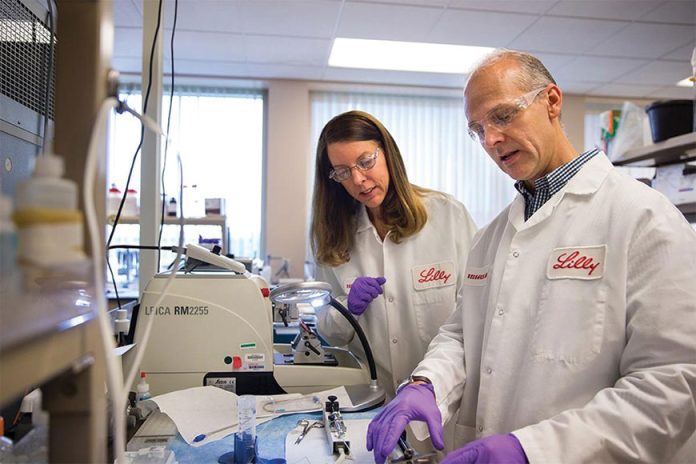- Findings from the TRAILBLAZER-ALZ 2 long-term extension study highlight Kisunla continued to demonstrate slowing of decline, with most participants having completed treatment.
- Data underscores the value of early intervention and supports a limited duration dosing approach with sustained long-term benefits.
Indianapolis, USA: Eli Lilly and Company (NYSE: LLY) announced results from the long-term extension (LTE) of the Phase 3 TRAILBLAZER-ALZ 2 study showing that participants treated with Kisunla (donanemab-azbt) demonstrated slowing of decline, a benefit that continued to grow over three years compared to an untreated external cohort from the Alzheimer’s Disease Neuroimaging Initiative (ADNI).
Participants in the study who started treatment later still saw benefit. However, earlier initiation of Kisunla in study participants significantly reduced the risk of progression to the next stage of the disease compared to those who received Kisunla treatment later. These data were shared as a late breaking 2025 Alzheimer’s Association International Conference (AAIC) presentation in Toronto.
“The TRAILBLAZER-ALZ 2 long-term extension reaffirms that Kisunla delivered sustained clinical benefit that continued to increase over three years and a consistent safety profile,” said Mark Mintun, M.D., group vice president, Neuroscience Research & Development, Eli Lilly and Company. “Participants continued to show meaningful outcomes, reinforcing the long-term value of early intervention.”
The TRAILBLAZER-ALZ 2 LTE study was a Phase 3, double-blind extension of the original TRAILBLAZER-ALZ 2 trial, evaluating the efficacy and safety of Kisunla in individuals with early symptomatic Alzheimer’s disease. Participants originally treated with Kisunla either continued treatment or were switched to placebo, while those initially on placebo began Kisunla in a blinded manner. An external comparator group from ADNI was used to assess outcomes against a matched, untreated population.
Key preliminary results from the TRAILBLAZER-ALZ 2 LTE study include:
- Kisunla benefit continued to grow over three years for participants treated in the study compared to those in the matched ADNI group. Kisunla reduced cognitive decline by -0.6 at 18 months and then –1.2 at 36 months on the Clinical Dementia Rating Sum of Boxes (CDR-SB) in patients initially treated with Kisunla in the core study compared to the ADNI group.
- Earlier initiation of Kisunla reduced the risk of progression to the next stage of disease by 27% on the Clinical Dementia Rating-Global Score (CDR-G) compared to a delayed initiation Kisunla group.
- More than 75% of participants treated with Kisunla reached amyloid clearance within 76 weeks of starting treatment.
- After up to 2.5 years of observed data in participants who had completed treatment, amyloid plaque reaccumulation remained slow at a rate of approximately 2.4 CL/year, consistent with prior observations and modeling.
- No new safety signals were observed in the LTE over the three years, further reinforcing the established safety profile for Kisunla.
Amyloid-related imaging abnormalities (ARIA) with edema/effusion (ARIA-E) and with hemorrhage/with hemosiderin deposition are side effects within the class of amyloid targeting therapies that do not usually cause any symptoms, but serious and life-threatening symptoms can occur. ARIA can be fatal. Carriers of one or two copies of the apolipoprotein E ε4 (ApoE4) gene may be at higher risk of developing Alzheimer’s disease and experiencing ARIA. Patients should discuss any safety concerns with their healthcare providers. Kisunla can also cause certain types of allergic reactions, some of which may be serious and life-threatening, that typically occur during infusion or within 30 minutes post-infusion. Headache is another commonly reported side effect. See the Indication and Safety Summary with Warnings below for additional information.


